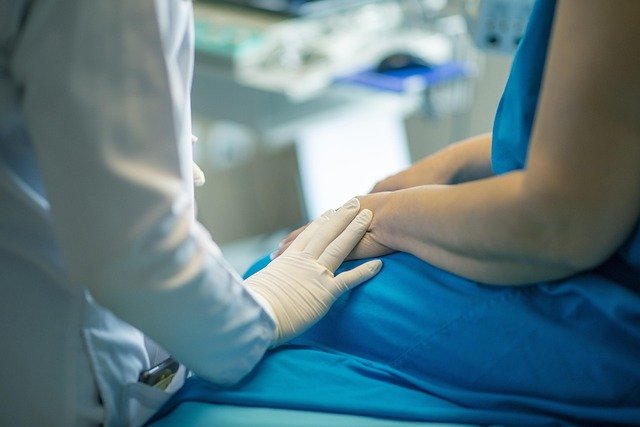Comprehensive Overview of Fat Removal Options in Australia
Fat removal procedures are gaining attention across Australia for their ability to target specific fat deposits without the need for invasive surgery. These procedures cater to individuals seeking to enhance their body contouring efforts. Results can vary significantly based on the individual, with various techniques available to address localized fat concerns, making it essential to understand the options and factors that influence outcomes.

Understanding Fat Removal Procedures
Fat removal procedures can be broadly categorized into surgical and non-surgical options. Surgical fat removal, primarily liposuction, involves physically extracting fat cells from the body through suction. Traditional liposuction requires general anesthesia and involves making small incisions to insert a cannula that breaks up and removes fat deposits. Modern variations include tumescent liposuction, which uses local anesthesia and a diluted solution to minimize bleeding and discomfort, and ultrasound-assisted liposuction (UAL), which employs ultrasonic energy to liquefy fat before removal.
Surgical options typically provide more immediate and dramatic results but come with longer recovery times and higher risks. In Australia, these procedures must be performed by qualified plastic surgeons or cosmetic physicians in accredited facilities, ensuring adherence to stringent safety standards established by the Australian Health Practitioner Regulation Agency (AHPRA).
Exploring Non-Surgical Options for Targeted Fat Reduction
Non-surgical fat reduction technologies have revolutionized the aesthetic industry in Australia. These procedures target and reduce fat cells without incisions, anesthesia, or significant recovery time. CoolSculpting (cryolipolysis) uses controlled cooling to freeze and eliminate fat cells, while SculpSure employs laser technology to heat and destroy fat cells. Ultrashape and Liposonix use ultrasound technology to disrupt fat cell membranes, and radiofrequency treatments like Vanquish ME heat fat cells to induce apoptosis (programmed cell death).
Injectable treatments like Kybella (deoxycholic acid) are specifically designed for submental fat reduction, dissolving fat beneath the chin. These non-surgical options typically require multiple sessions spaced several weeks apart, with results developing gradually over 1-3 months as the body naturally eliminates the treated fat cells.
Factors Influencing Results and Individual Case Variations
The effectiveness of fat removal procedures varies significantly based on individual factors. Body type, fat distribution patterns, skin elasticity, and overall health status all impact treatment outcomes. Patients with good skin elasticity typically achieve more aesthetically pleasing results, as the skin can retract and conform to new contours after fat removal. Age is another critical factor, as older patients may experience less skin retraction due to decreased collagen production and elasticity.
The area being treated also influences results. Some regions, such as the abdomen and flanks, typically respond well to both surgical and non-surgical approaches, while others, like the inner thighs or upper arms, may present greater challenges. Realistic expectations are essential—fat removal procedures are not weight-loss solutions but rather contouring treatments designed to address stubborn fat deposits resistant to traditional weight management methods.
Comparing Fat Removal Options: Procedures, Providers and Costs
When considering fat removal in Australia, understanding the available procedures and their associated costs is crucial for making an informed decision. The pricing structure varies widely depending on the procedure type, treatment area, provider expertise, and geographical location within Australia.
| Procedure Type | Average Cost Range (AUD) | Provider Type | Recovery Time | Results Timeline |
|---|---|---|---|---|
| Liposuction | $3,000-$7,500 per area | Plastic Surgeon | 1-2 weeks | Immediate to 6 months |
| CoolSculpting | $600-$1,500 per applicator | Medical Spa/Clinic | None to minimal | 1-3 months |
| SculpSure | $400-$1,200 per session | Medical Spa/Clinic | None to minimal | 6-12 weeks |
| Kybella | $600-$1,800 per session | Cosmetic Physician | 1-3 days | 4-6 weeks |
| Ultrasound Fat Reduction | $800-$2,000 per area | Medical Spa/Clinic | None | 2-3 months |
| Radiofrequency Treatments | $300-$1,000 per session | Medical Spa/Clinic | None | 4-8 weeks |
Prices, rates, or cost estimates mentioned in this article are based on the latest available information but may change over time. Independent research is advised before making financial decisions.
Safety Considerations and Recovery Expectations
Safety should be paramount when considering any fat removal procedure. In Australia, surgical procedures should only be performed by qualified surgeons registered with AHPRA. Potential complications from surgical fat removal include infection, contour irregularities, fluid accumulation, and adverse reactions to anesthesia. Non-surgical methods generally carry fewer risks but may still cause temporary side effects like redness, swelling, bruising, or discomfort.
Recovery timelines vary significantly between procedures. Surgical liposuction typically requires 1-2 weeks of downtime, with compression garments worn for several weeks afterward. Patients may experience swelling for up to six months, with final results becoming apparent as this subsides. Non-surgical treatments usually involve minimal to no downtime, allowing patients to return to normal activities immediately, though minor discomfort or swelling may persist for a few days.
Maintaining Results Long-Term
Maintaining fat removal results requires lifestyle management. While removed fat cells do not regenerate, remaining fat cells can still expand if caloric intake exceeds expenditure. A balanced diet and regular exercise program are essential for preserving results. Some patients benefit from follow-up treatments, particularly with non-surgical options, to achieve optimal outcomes.
Weight fluctuations can compromise results, so weight stability is recommended after any fat removal procedure. Australian practitioners typically advise patients to be at or near their goal weight before undergoing treatment and to implement sustainable lifestyle changes to maintain their new contours long-term.
This article is for informational purposes only and should not be considered medical advice. Please consult a qualified healthcare professional for personalized guidance and treatment.




